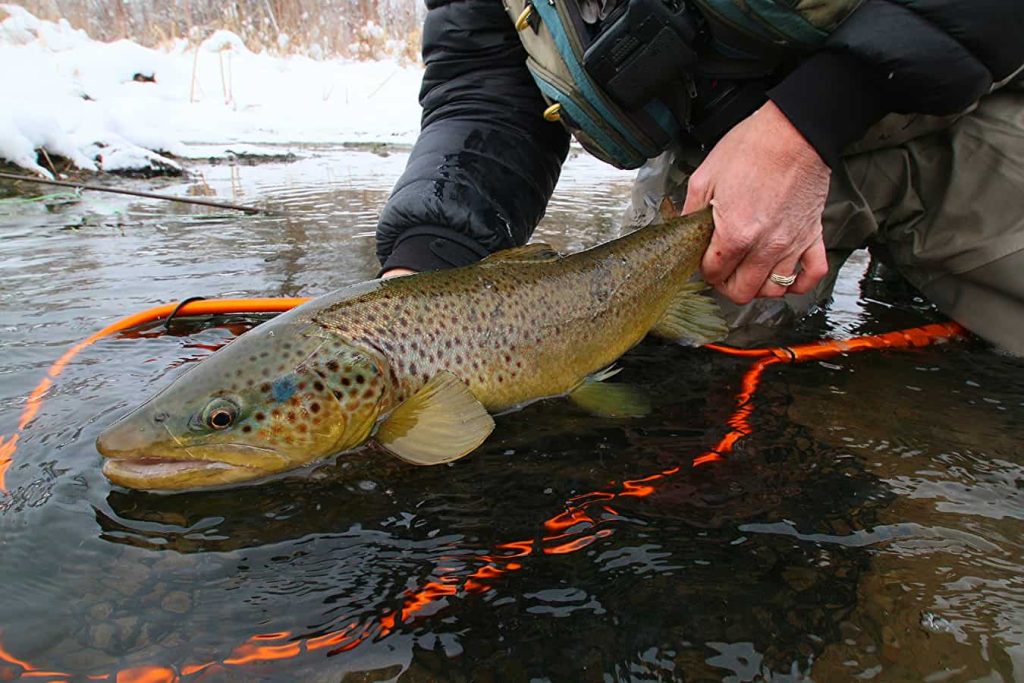Micro-Managing: How to Fish a Winter Midge Hatch

Image by Mike Doughty
Good things really do come in small packages. Whether we’re talking about microbrews, angry chihuahuas, or even that little dude from Game of Thrones, it’s been proven time and time again that things don’t actually have to be big to make a big impression. This is especially true in the world of fly fishing where some anglers can become completely obsessed with small creeks, small rods, and even small fish. Yet, during the winter when the weather is bitter and the fishing is slow, even the most miniature-minded anglers will overlook one of the tiny highlights of the cold season—the winter midge hatch.
What Are Midges?
Midges are minute insects similar to mosquitoes that have some of the longest running hatches of the year. From October to May, these members of the Chironomid family rise to the surface of rivers to breed and eventually die just like larger, more popular mayflies. Trout will feed on midges throughout the year as they are almost always present in the river. But as they are one of the few insects active in winter, the fish start to pay them extra attention when it gets cold.
Fly anglers can catch trout on midges using both nymphs and dry flies as trout will feed on them throughout their life cycle. However, whether the fish are inhaling the tiny underwater nymphs drifting past their noses or gathering in pools and back eddies to slurp mouthfuls of adult midges from the surface, catching trout consistently on midges is a discipline. It requires patience, skill, and most importantly—using the right equipment.
Midge Fishing Equipment
Midge fishing is all about downsizing. Not only are the flies small but as rivers in winter are usually flowing low and clear, the trout are spooky and hard to approach with heavy gear. Standard 5-weight rods can work, but you’re probably better off using a softer, full-flex 4-weight or even a 3- weight rod which will help you gently cast small flies and detect what are often subtle strikes.
Leaders for midge fishing should also be subtle as well. The 3x and 4x monofilament leaders that you use for most trout fishing will usually be too thick for fishing midges and can be easily seen by trout feeding in low and clear water. Instead, try using long 9-foot to 10-foot fluorocarbon leaders that are somewhere in the 5x to 7x range.
Most anglers get into fish consistently with only a few different midge patterns. When using nymphs, Zebra Midges and lighter Mercury Midges will cover most of your bases. With dry flies, you’ll want emerger patterns like the Klinkhammer Midge and the Smokejumper as well as a couple adult imitations such as the Black Gnat. You’ll also want flies that represent midge clusters such as the Crackleback. And all your flies should be in varying colors and sizes ranging from 16 to 22.
Midges on the Water
The key to success with midge fishing is finding the slowest moving and deepest water that is directly downstream of faster moving currents. These are prime winter trout lies and the most likely places for you to get a hook up with both nymphs and dry flies. Nymphing is likely to be your best producer on any given day as there’s almost no point in fishing with midge dry flies unless you actually see fish rising.
Set-up your nymph rig by tying a length of fluorocarbon tippet to the end of your leader so that your line is at least half-again as long as the depth of the water you are fishing. This long leader is necessary as midge flies sink slowly in the current and adding too much split shot to the line will cause your flies to drift unnaturally. Tie a larger bead head midge on as your lead fly and then add a smaller lighter pattern about 6-inches below as a dropper. It’s best when you first start out to use sharply contrasting colors, such as a black lead fly and a red dropper, until you get an idea of what the fish are hitting. Add a small BB-size split shot a few inches above your top fly and as small an indicator as possible to the top of your set-up. This is to both ensure that the flies reach the right depth and to help you detect very gentle strikes.
Cast your nymphs well above the areas where you think the fish are holding and mend as often as possible to ensure your flies are drifting as slowly as they can. During winter, trout are extremely sluggish and won’t move far for their food. So work the water thoroughly by casting and drifting through likely spots several times before moving on.
Dry fly fishing with midges is best on calm, bright days when the air temperature is in the mid-30’s and above and the fish are rising. Concentrate your efforts on long stretches of slow moving water, targeting a specific fish before casting. As with the nymphs, trout won’t move far for your bug and in the low-clear water they tend to be incredibly spooky. Your first drift has to be close to perfect if you want to be successful.
It’s a Small World After All
There’s something inherently beautiful about midge fishing. The tiny flies, the accurate casting, and the careful working of water on cold, calm days when the river is still under the quiet blanket of winter adds a magic to it that can’t be found anywhere else. You learn to focus on small areas of water and to pay attention to the tiny details and for a brief time the whole world narrows down to a small moment, when it’s just you, a drifting fly, and the fish.










